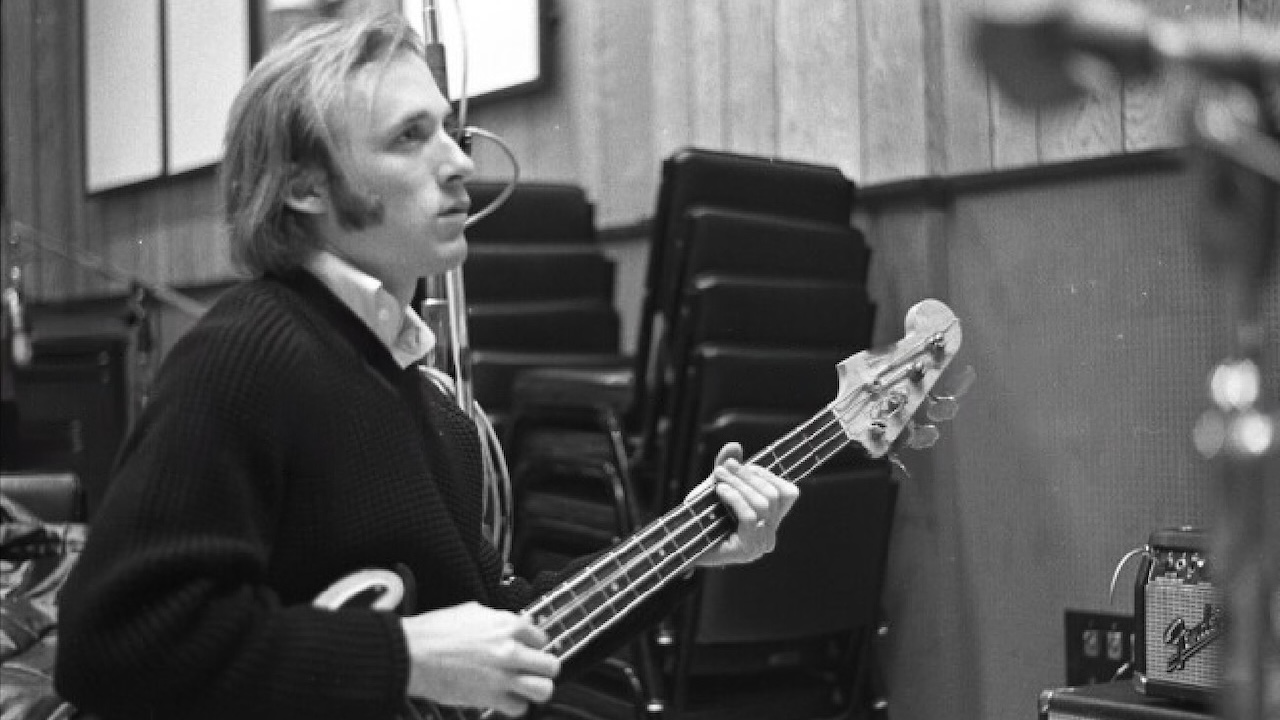
Nicknamed ‘Captain Manyhands’ by longtime bandmates David Crosby and Graham Nash for his ability to play just about anything, Stephen Stills ranks among pop music's finest unsung bass talents.
Though he's best known as one of three namesake singer/guitarists in Crosby Stills & Nash, Stills played bass guitar on all of the band's records. His loping, Latin-flavored basslines also grace his nine solo albums, as well as records by Joni Mitchell, Neil Young & Crazy Horse, Richie Havens, and Judy Collins.
It was Collins for whom Stills wrote the centerpiece of Crosby Stills & Nash's self-titled 1969 Atlantic debut. The tune, Suite: Judy Blue Eyes, is a sprawling composition propelled by his buoyant bass work.
“Everything I do is bass-driven,” Stills told Bass Player. “That comes from playing in the rhythm section of swing bands early on in life.”
Stills recorded using his 1960 Fender Precision Bass. “I've used that same bass on virtually everything I've done. I had the same set of flatwound strings on it for almost 10 years.
“I wanted it to sound like an upright – without much sustain. So I'd cover the strings in cheeseburger grease, barbecue sauce – even blood – so they'd get nice and dead. I don't want the bass to sound like a friggin' guitar!”
The session took place in February 1969. Stills recalls cutting the track in one take in the control room alongside engineer Bill Halverson. “We had recorded the scratch vocal tracks, but I had to get the bassline down before we could really sing to it. The vocal phrasing wouldn't work until I had the bass together.
“For an amp, I think I used my old brown-faced Fender Bassman, or maybe an Ampeg B-15. At that time, recording technology was such that lower frequencies wouldn't transfer that well. They'd bounce the needle right out of the groove. We used a Urei compressor – it had a nice midrange, and it evened out the sound.”
"Because I play bass myself, I'm pretty demanding. I find the simplest way of working is either to write it down or go over to the cat and play it for him." Stephen Stills pic.twitter.com/4S74Jr8vB0May 19, 2023
Like the Motown bassist James Jamerson, Stills has an unusual plucking-hand approach. “Mine is based on old-time technique – two fingers together. Sometimes I use my fingernails to get a little more snap.”
After starting with a hard-hitting fill, Stills launches into the tune with an energy that would rival any Carol Kaye bassline, filling the opening sections with Jamerson-style syncopation and chromatic runs. Note how he anticipates most of the downbeats, giving the tune a Caribbean-like feel.
“I did a lot of L.A. session work in the rhythm guitar section sitting behind Carol Kaye. She can drive a line as well as anybody out there. Carol is one of my top three bassists, alongside Jamerson and Paul McCartney.”
As the track transitions to the suite's penultimate part, Stills pedals on E, setting an insistent one-two pulse that re-establishes the original tempo.
After the vocals enter, he returns to syncopated fills and chromatic runs similar to those he played at the beginning of the tune. There's hardly a repeated line in sight, and his bass playing gives the spontaneity that helps build to the playout.
“Playing with a Latin feel is something I've always been able to do well because that's what I heard all around me going to high school in Central America. Salsa is in my blood – there's a Latin flavor to everything I do.”







